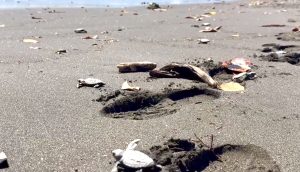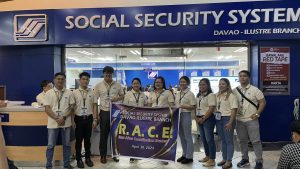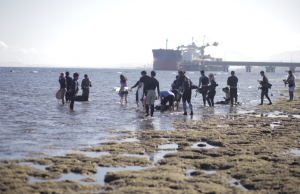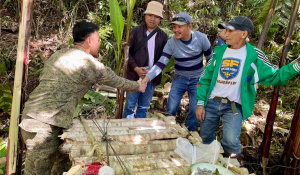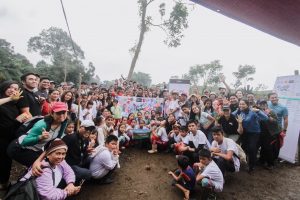 The Philippines is one of the 17 megadiverse countries in the world and yet one of the hottest hotspots due to the alarming habitat loss. The current state of the Philippine’s biodiversity is alarming with many possible novel species getting extinct without being known.
The Philippines is one of the 17 megadiverse countries in the world and yet one of the hottest hotspots due to the alarming habitat loss. The current state of the Philippine’s biodiversity is alarming with many possible novel species getting extinct without being known.
We practice poor environmental decisions such as conversion of forests habitats into agricultural and commercial purposes leading to species loss. This poor decision making can be greatly attributed to lack of education and engagement to biodiversity conservation initiatives. Thus, recently several attempts have been done to increase this engagement through ‘citizen science’.
According to National Geographic “Citizen science is the practice of public participation and collaboration in scientific research to increase scientific knowledge. Through citizen science, people share and contribute to data monitoring and collection programs usually done as an unpaid volunteer”.
In Mindanao, the first citizen science project is led by the University of Mindanao in partnership with National Geographic. Last year, a BioBlitz activity was conducted in Mt. Hamiguitan Range Wildlife Sanctuary where 70 students, teachers, forest rangers and scientists were involved to document the species of Mt. Hamiguitan.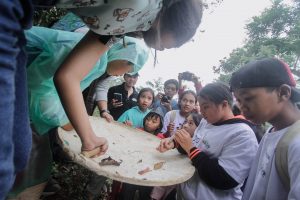
This year, BioBlitzes were led by UM in partnership with Australian Global Alumni, San Pedro College, Philippine College of Technology, Catigan Elementary School, Catigan National High School and the Bagobo Tagabawa tribal council with funding from National Geographic.
The first BioBlitz event was conducted at UM campus on August 29, 2019 where more than 200 participants from different schools and industries participated. They learned the use of iNaturalist app through the National Geographic Society citizen science coordinator Dr. Carlos Velazco. iNaturalist is a citizen science app where anybody can upload wildlife observations to be made available to different scientists all over the world while BioBlitz is an intense period of biological surveying in an attempt to record all the living species within a designated area. The event was followed by a mini-BioBlitz led by National Geographic Explorer Dr. Analyn Cabras and Australian Global Alumni Dr. Milton Norman Medina.
The second BioBlitz was conducted with the Bagobo Tagabawa kids in Catigan Elementary School and Catigan National High School in Mt. Apo Natural Park where more than 200 kids, teachers, military men, parents, farmers, Australian Global Alumni, volunteers from different schools and scientists joined the activity to record the biodiversity in Mt. Apo Natural Park. Both activities have been greatly enjoyable for everybody where they were able to record species, learn about their names, and presented their data in front of their parents, local experts, and volunteers.
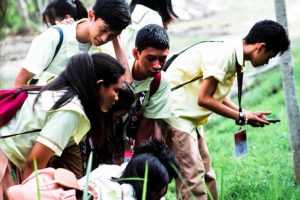 The UM BioBlitz generated 507 observations, 139 species and 69 participants who uploaded their photos. As for the Mt. Apo BioBlitz, 189 observations with 69 species and 8 observers were recorded. The number of observations for the entire Davao City is now increased from 913 observations, 508 species and 49 observers to 2491 observations, 718 species and 126 observers. This is a testament of the increase of engagements of citizens in understanding our local biodiversity. UM in partnership with various schools will lead the City Nature Challenge by 2020 wherein Davao City will be the first city in the Philippines to participate in recording local biodiversity and to compete with other cities in the world. (University of Mindanao Research and Publication Center.)
The UM BioBlitz generated 507 observations, 139 species and 69 participants who uploaded their photos. As for the Mt. Apo BioBlitz, 189 observations with 69 species and 8 observers were recorded. The number of observations for the entire Davao City is now increased from 913 observations, 508 species and 49 observers to 2491 observations, 718 species and 126 observers. This is a testament of the increase of engagements of citizens in understanding our local biodiversity. UM in partnership with various schools will lead the City Nature Challenge by 2020 wherein Davao City will be the first city in the Philippines to participate in recording local biodiversity and to compete with other cities in the world. (University of Mindanao Research and Publication Center.)

